When ancient Egypt and Ireland are spoken about in the same breath it usually results in the rolling of eyes, polite exits and the sound of murmurs citing pseudo-history and new age babble.
At least, that used to be the case.Recent discoveries in DNA research have added to already verified archaeological finds to present a scenario that is now more difficult to dismiss.
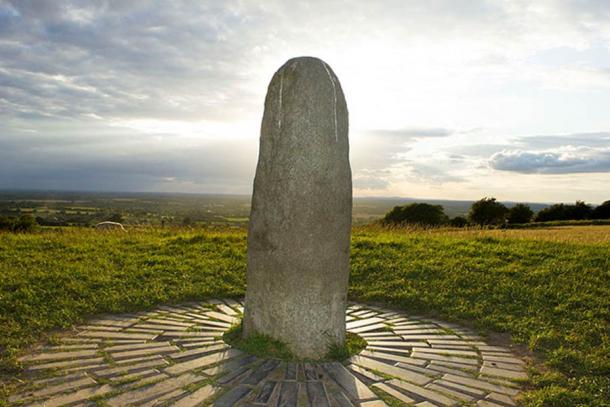
Lia Fáil, also known as the Coronation Stone or Stone of Destiny, was an important ritual component in the coronation of ancient High Kings of Ireland. (JohnJDuncan / CC BY-SA 4.0 )
The Hill of Tara is one of Ireland’s most ancient sacred sites. It is surrounded by many other Neolithic earthworks and tombs and although commonly associated with the Celts, the site pre-dates their arrival in Ireland by thousands of years.
In legend it is the place where the Tuatha De Danann reigned. These were a God-like people who were said to have arrived in Ireland in mysterious ships and had magical powers.
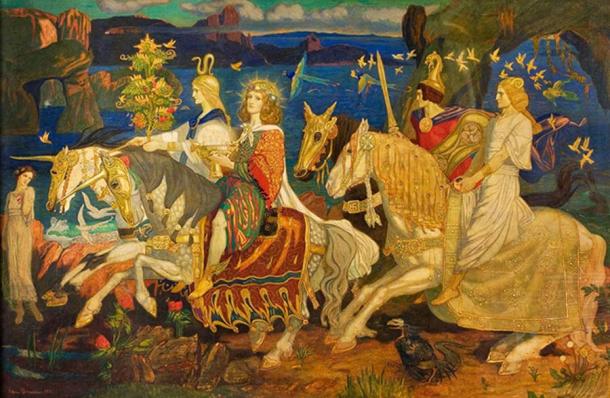
Tuatha de Dannan: Riders of the Sidhe by John Duncan. ( Public Domain )
Ritual Burials and Mysterious Bones
During recent and very controversial excavations near Tara a story emerged about a strange skeleton that had been found by workers digging at Lismullin Henge. Some thought it was the remains of a dog, others a badger. But, most curious of all was the claim of some witnesses that the remains were, in fact, those of an ape.
As Con Connor, Arch Druid of Ireland’s Celtic Druid Temple writes, “Why was such a ritual burial in a royal site not cause for focused investigation?”
In her work, A Course of Severe and Arduous Trials , author Lynn Brunet writes that, “Furthermore, the Irish Masonic author, J. A. Penny notes that a skeleton of a Barbary ape had been found at Tara, the mythical center of Ireland and seat of the High King.”
But why would there have been such strange bones buried at this site? These primates are not indigenous to Ireland and the archaeological complex surrounding Tara dates back thousands of years. If bones of an ape had been found at any point, do we have a precedent for such a burial at any other of Ireland’s most ancient sacred places?
In fact we do. During excavations at Eimhain Macha (Navan Fort) in County Armagh, the skull of a Barbary ape was found. When it was carbon dated it was discovered to be roughly 2,500 years old. The question for many archaeologists was how it got to Ireland in the first place, but perhaps a more intriguing enquiry would investigate why.
The Irish-Egyptian Connection
One of the more controversial theories when it comes to the origins of the Irish people is a connection to ancient Egypt. Although there are many Irish legends connecting Tara and Egyptian royalty, these have been impossible to prove.
- Scota: Mother of Scotland and Daughter of a Pharaoh
- Viking beaters: Scots and Irish may have settled Iceland a century before Norsemen
One of the most intriguing examples of these proposals was the discovery of the skeleton of a 15-year-old boy at The Mound of the Hostages, near Tara, by Dr. Sean O Riordan of Trinity College. Carbon dating showed that the remains were roughly 3,800 years old. A necklace found with the skeleton was made of faience beads and matched similar Egyptian manufacture and design.
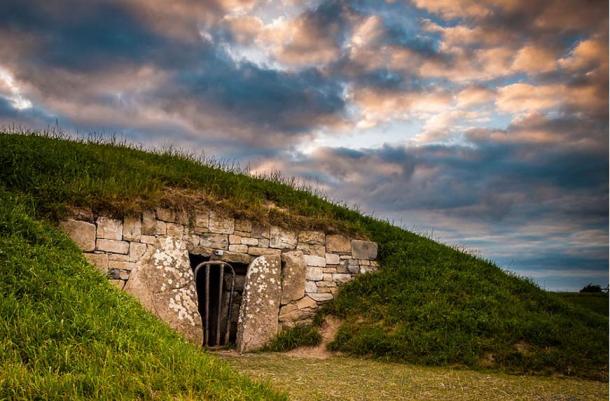
The Hill of Tara is an archaeological complex featuring many ancient monuments, such as the ‘Mound of Hostages’, seen above. In tradition Hill of Tara is known as the seat of the High Kings of Ireland. (CC BY-SA 4.0 )
Scotia, Egyptian Royalty
There is also the famous legend of Queen Scotia, an Egyptian princess or queen, depending on which version of the legend you read, who was said to have arrived in Ireland in 1700 BC and was killed by the Tuatha De Danann in a great battle.
Her supposed grave is marked by a giant inscribed stone in County Kerry and its importance has led to local politicians calling for its preservation.
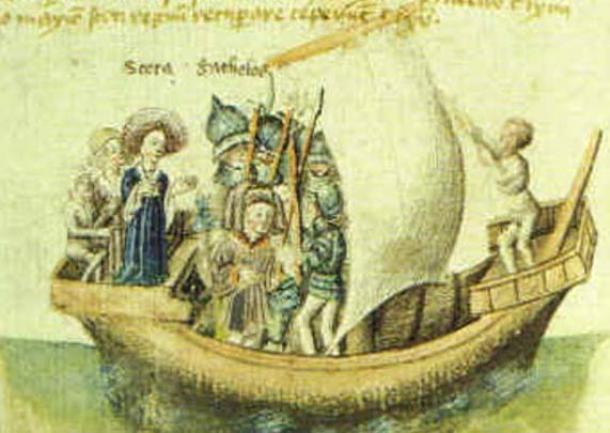
A 15th century depiction of Scota’s voyage from Egypt. ( Public Domain )
An interesting aside is that Scotia’s grave is not far from the island of Skellig Michael, the site of a pre-Christian settlement and a later monastery.
According to the 11th-century Lebor Gabála É renn (Book of Invasions), Milesius, a great leader of one of Ireland’s invaders lost two of his sons nearby in 1400 BC when a magical storm caused by the Tuatha De Danann submerged their ship.
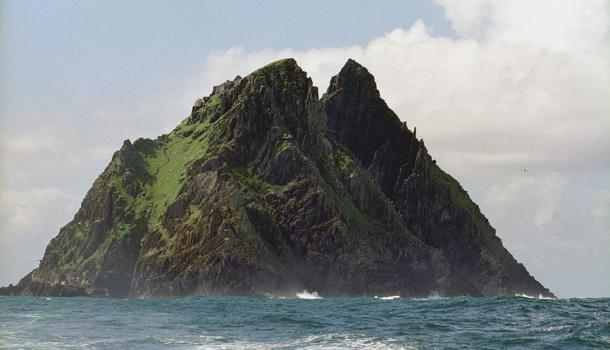
The majestic and isolated Skellig Michael off Ireland’s coast. ( CC BY-SA 3.0 )
Despite these legends, up until recently there had been very little strong academic evidence linking Ireland with the lower Mediterranean. In December 2015, however, this all changed.
Groundbreaking DNA Findings
Scientists from Trinity College Dublin and Queen's University Belfast published new findings in the journal, the Proceedings of the National Academy of Sciences . What they found was that the ancient Irish were not only related to the people of southern Europe but that that there was a Middle Eastern connection too.
With this new knowledge comes a tantalizing explanation for the ape skull in ancient Ireland and which connects to a previously unexplored etymological link to the Tuatha De Danann .
Commonly, the meaning of this mysterious race has been posited as The People of Danu , a mother goddess from Irish mythology. However, the earliest recordings of the Tuatha do not include the last word Danann









0 yorum: